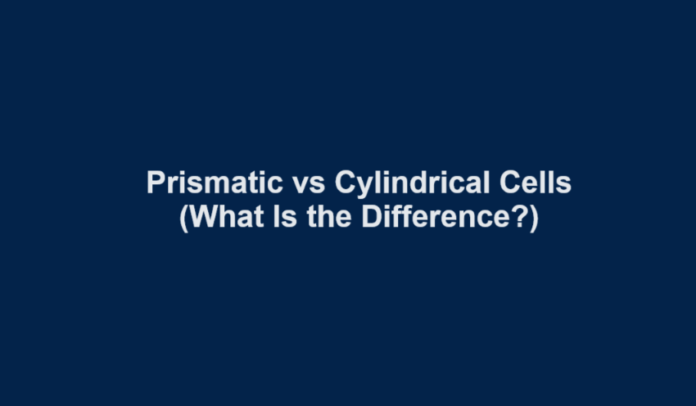
A prismatic cell is a cell whose chemistry is enclosed in a rigid casing. An Example of a Prismatic Cell is Lithium Phosphate battery Life (PO4). Cylindrical cells are the cells that are mostly used in medical instruments, e-bikes, and in laptops. The batteries used in Tesla vehicles are an example of cylindrical cells.
Prismatic Cell:
Prismatic cells are used for large capacities. For example, one Lithium Phosphate battery in the prismatic cell has 3.2 volts 100 ah. Prismatic cells are enclosed in aluminum or steel to gain stability. The rectangular shape of a prismatic cell helps to stack multiple units in a module.
Prismatic cells are used in electric vehicles and other large-scale applications. These cells have rectangular flat faces on opposite sides. The prismatic cells are more expensive but they work more efficiently and take less space and get more stability.
Prismatic LFP is a battery that contains lithium iron phosphate in a prismatic shell. The electrode tablets that contain anode, cathode, and partition in a shell form a battery pack that works efficiently.
Advantages of Prismatic Cells:
The advantages of Prismatic Cells are as follows
These cells contain more energy and have better durability. These cells are less universal. They can to supply more energy in fewer package. They give better efficiency of working than other cells.
Its specialty is Tesla decided to use prismatic LFP cells instead of NMC inside the power wall 3. LFP uses iron instead of nickel and cobalt. It is safer to use and has greater durability.
Cylindrical Cell:
A Cylindrical cell can be defined as It is a cell that is enclosed in a rigid cylindrical can.
Cylindrical Cells are made by deep drawing and wall featuring method having a wall thickness of 0.75 mm and a bottom thickness is 0.9 mm. Cylindrical cells are round and small and easily fixed in all devices of all sizes. Cylindrical cells are more often used in toys and electrical appliances because of their high performance and long- lasting battery timing. The cylindrical cells are usually made of steel and aluminum cases. Tesla used cylindrical cells in their vehicles of Model S, Model Y, Model 3, Model X, and Roadsters.
Components in Cylindrical Cells:
Components present in cylindrical cells can be classified into three major groups:
- Jelly Roll
- Current connectors
- Safety devices
A jelly roll contains a positive electrode, a negative cathode, and a separator.
Capacity of Cylindrical cell:
The Capacity of a cylindrical cell ranges from 1.2 to 3 Ah depending on the technology where it can be used.
Cylindrical cells are connected through aluminum conductors having thicknesses of 0.25 to 1.0 mm. Cylindrical cells are strong and they have good heat dissipation characteristics.
Advantages of Cylindrical Cells:
Cylindrical Cells have good safety performance, and these do not easily cause explosions. They have high energy density and good ductility.
Disadvantages of Cylindrical Cells:
Disadvantages of cylindrical cells are they have high cost and they bear relatively low mechanical load. Due to this they can easily damage and leak.


















